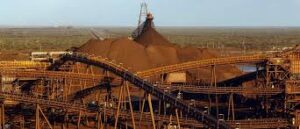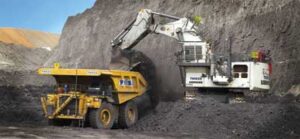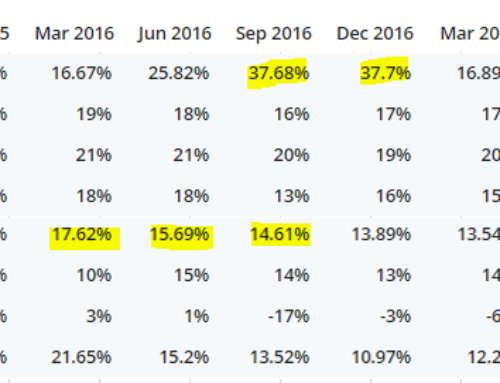As the primary sector of economics, mining is significant for development, not for employment but for utilization of natural resources. Minerals constitute the backbone of the economic growth of any nation, and India has been eminently endowed with this gift of nature. There is much evidence that the exploitation of minerals like coal, iron ore, copper, and lead zinc has been happening in the country from time immemorial. The Mining industry in India is a significant economic activity that contributes significantly to the economy of India. The GDP contribution of the mining industry varies from 2.2% to 2.5% only but goes to the GDP of the entire industrial sector, which contributes around 10% to 11%. Even mining done on a small scale contributes 6% to the total cost of mineral production. The Indian mining industry provides job opportunities to around 700,000 individuals.
However, the first recorded history of mining in India dates back to 1774, when an English Company was granted permission by the East India Company to mine coal in Raniganj. M/s John Taylor & Sons Ltd. started gold mining in Kolar Gold Fields in 1880. The first oil well was drilled in Digboi in 1866 – just seven years after the first-ever oil well was drilled anywhere in the world, viz. in Pennsylvania state, the USA, in 1859. However, mining activities in the country remained primitive in nature and modest in scale-up until the beginning of the current century. With progressive industrialization, the demand for and hence the production of various minerals gradually went up. After India became independent, the growth of mining under the impact of successive Five Year Plans has been speedy. Ere are ambitious plans in the coal, metalliferous, and oil sectors to increase the production of minerals during the 8th Five Year Plan and after that.
India has significant sources of coal (fourth-largest reserves in the world), bauxite, titanium ore, chromite, natural gas, diamonds, petroleum, and limestone. According to the 2008 Ministry of Mines estimates: ‘India has stepped up its production to reach the second rank among the chromite producers of the world. B sides, India ranks 3rd in production of coal & lignite, 2nd in barites, 4th in iron ore, 5th in bauxite and crude steel, 7th in manganese ore, and 8th in Aluminium.
India accounts for 12% of the world’s known and economically available thorium. India is the world’s largest producer and exporter of mica, accounting for almost 60 percent of the net mica production in the world, which it exports to the United Kingdom, Japan, United States of America, etc. One of the world’s largest producers and exporters of iron ore, its majority of exports go to Japan, Korea, Europe, and the Middle East. J pan accounts for nearly 3/4 of India’s total iron ore exports. I also have one of the largest deposits of manganese in the world and am a leading producer as well as exporter of manganese ore, which it exports to Japan, Europe (Sweden, Belgium, Norway, among other countries), and to a lesser extent, the United States of America.
D.R. Khullar holds that mining in India depends on over 3,100 mines, of which over 550 are fuel mines, over 560 are mines for metals and over 1970 mines for the extraction of nonmetals. The figure given by S.N. Padhi is: ‘about 600 coal mines, 35 oil projects and 6,000 metalliferous mines of different sizes employing over one million persons on a daily average basis. Open cast mining and underground mining operations are carried out, and drilling/pumping is undertaken for extracting liquid or gaseous fuels. The country produces and works with roughly 100 minerals, an essential source for earning foreign exchange and satisfying domestic needs. It also exports iron ore, titanium, manganese, bauxite, and granite and imports cobalt, mercury, graphite, etc.
Unless controlled by other departments of the Government of India, mineral resources of the country are surveyed by the Indian Ministry of Mines, which also regulates how these resources are used. The ministry oversees the various aspects of industrial mining in the country. The ministry also controls the Geological Survey of India and the Indian Bureau of Mines. Natur l gas, petroleum, and atomic minerals are exempt from the various activities of the Indian Ministry of Mines.
In India, systematic surveying, prospecting, and exploration for minerals are undertaken by the Geological Survey of India (GSI), Central Mine Planning & Design Institute (CMPDI), Oil and Natural Gas Corporation (ONGC), Mineral Exploration Corporation Limited (MECL), National Mineral Development Corporation (NMDC), Indian Bureau of Mines (IBM), Bharat Gold Mines Limited (BGML), Hindustan Copper Limited (HCL) National Aluminium Company Limited (NALCO) and the Departments of Mining and Geology in various states. In addition, the Centre for Techno-Economic Mineral Policy Options (C-TEMPO) is a think tank under the Ministry of Mines that looks at the national exploration policy.





